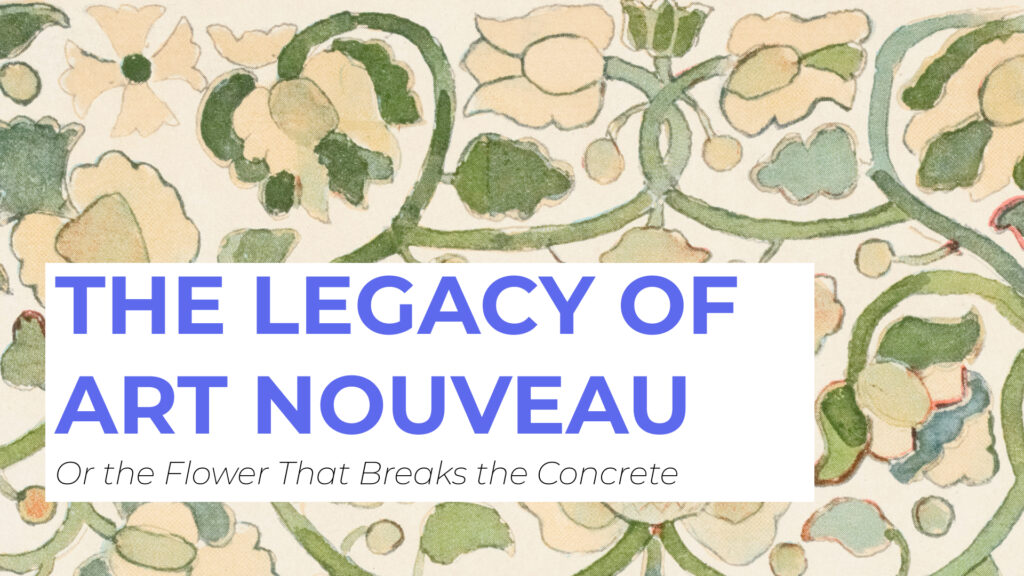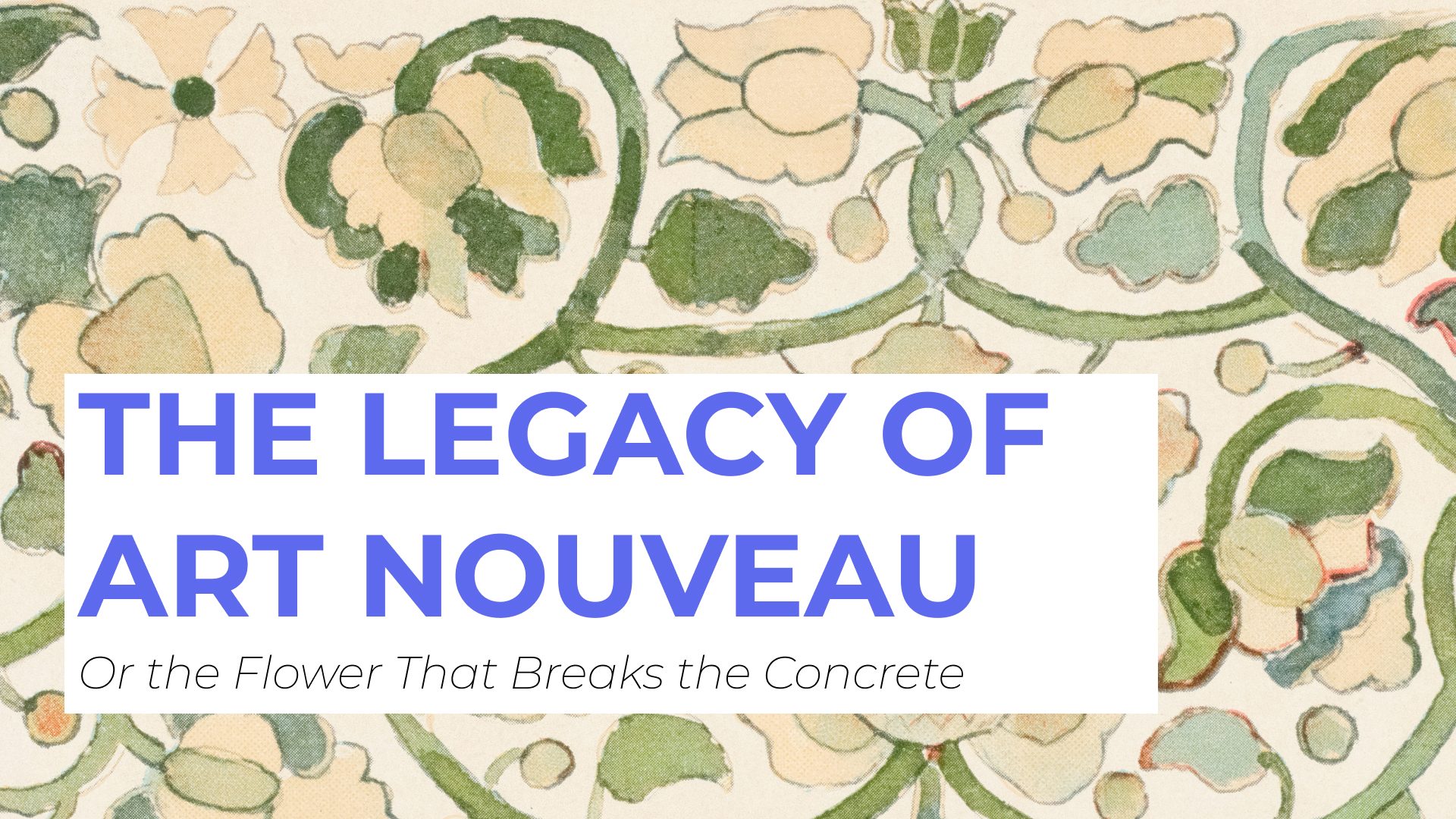Throughout history, art has been much more than just creating beautiful things. It essentially mirrors the moods and issues of each epoch. Through the means of it, artists expressed their opinions and reactions to what was going on in the world.
Right now, the design industry is drowning in an AI-generated content pandemic. Add the overuse of dime-a-dozen templates, and everything is starting to look all too similar, lacking any creative substance… And we’re not okay with that.
The same way felt our fellow creatives in the 1890s, except for their villain wasn’t algorithms – it was industrialization. Numerous factories were flooding the world with identical, simplistic products. Additionally, the cities were covered in soot, and everything felt cold and mechanical.
And when they’d had enough of that, the grey concrete was broken by a rebellious flower that is now referred to as Art Nouveau.
Table of contents:
What Are the Origins of Art Nouveau
The term “Art Nouveau” was coined by a Belgian journal, L’Art Moderne, to refer to the work of the group of twenty avant-garde artists known as Les XX. Meanwhile, in England, the style organically enhanced the Arts and Crafts Movement, which emerged as a reaction to rapid industrialization. Naturally, the tidal wave of this art rebellion soon spread throughout Europe.
Art Nouveau followers rejected the tradition and classical references in art. It’s no coincidence that I’ve used a flower metaphor to describe the style in the introduction. The thing is, its features derive from the unruly and flowy natural motifs. Begone the symmetry and straight, sterile lines! Climbing vines, wave ripples, and petal-like curves have stolen the spotlight. Nothing was still and static anymore as the artists tried to capture nature’s wild, untamed energy. To get a clearer picture, I invite you to have a look at Alphonse Mucha’s piece of work.
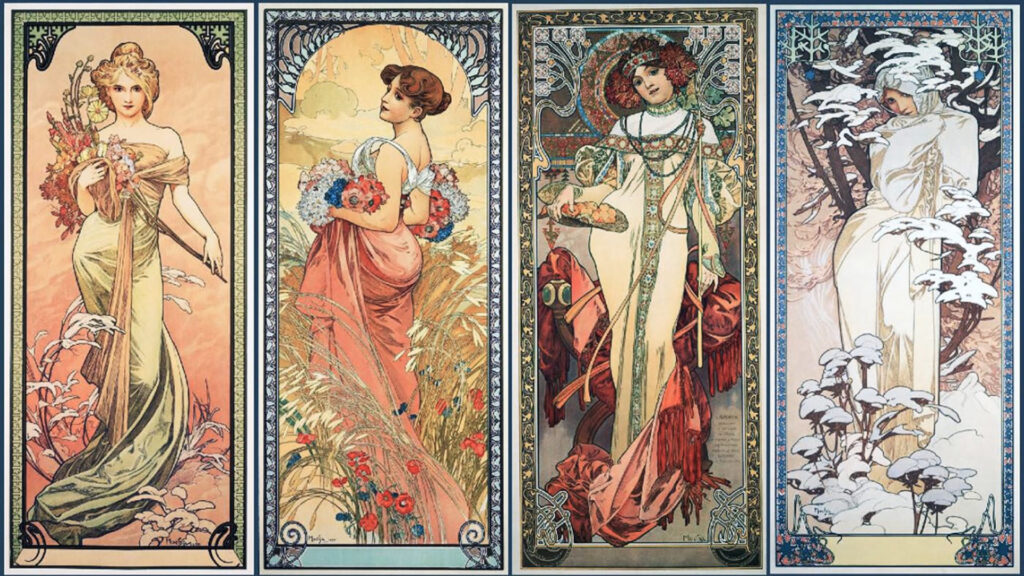
Given that it was caused mainly by the factory’s mass production, the artists blurred the line between fine and decorative art. Such an approach resulted in the creation of everyday objects that could brighten up the grey reality. Cutlery, glassware, jewellery, fashion, furniture… you name it. The goal was to bring luxury to the masses and demonstrate that ordinary objects could be extraordinary.
To put it short, Art Nouveau made art democratic. Some called it vulgar, some downright criminal. But at its core, it was revolutionary.
How Did Art Nouveau Influence the Design Industry
Since the epoch brought fine art into the mundane life, design ran wild even for the first necessity objects. This fundamental shift gave a new perspective on the things that surround simple people, be it a poster or a vase. So, what are the main elements of Art Nouveau?
Asymmetrical composition
Symmetry is a foreign notion for nature. And let’s be honest, people just got bored with the strict and perfect balance of neoclassicism. Art Nouveau artists looked at its sterility and said, “boring”. Instead, they brought vitality to their compositions, making them feel dynamic and alive. All of a sudden, designs flowed and moved around vibrantly instead of sitting there rigidly.
Typography Became an Art Form
The Art Nouveau designers viewed typography as not just letters, but as an actual part of the artwork. Similarly to the lines and forms of the composition, the typefaces learned to flow, curve, and twist. Text became decoration, intertwining organically with illustrations. Such a new approach opened up entirely new possibilities for how we communicate visually.
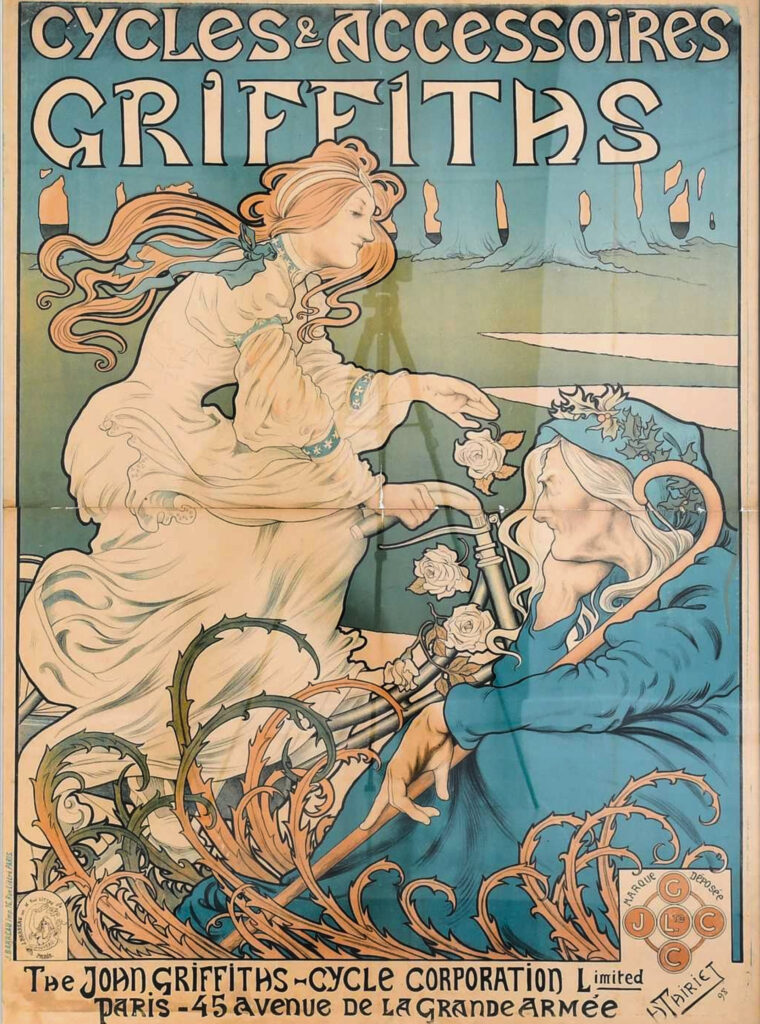
The Rise of Commercial Art
Nowadays, no one would bat an eye at the idea that a poster or an advertisement can be art. It wasn’t always like this, though. The change happened when commercial retailing pervaded the urban continent. With high competition rose the creative ways of standing out. Associated with luxury, Art Nouveau influenced marketing, paving the way for designed posters.
Make sure your posters don’t lack a thing

With Approval Studio, your commercials design review is no longer a hassle!
Start a Free TrialNot Only Pretty But Also Useful
As we’ve established, the things viewed previously as purely functional gained aesthetic value. This mindset later led to the concept of “the total work of art”, known as Gesamtkunstwerk. From the building facade to its door handles, everything in space felt connected. And those were the origins of what today we call brand identity and user experience.
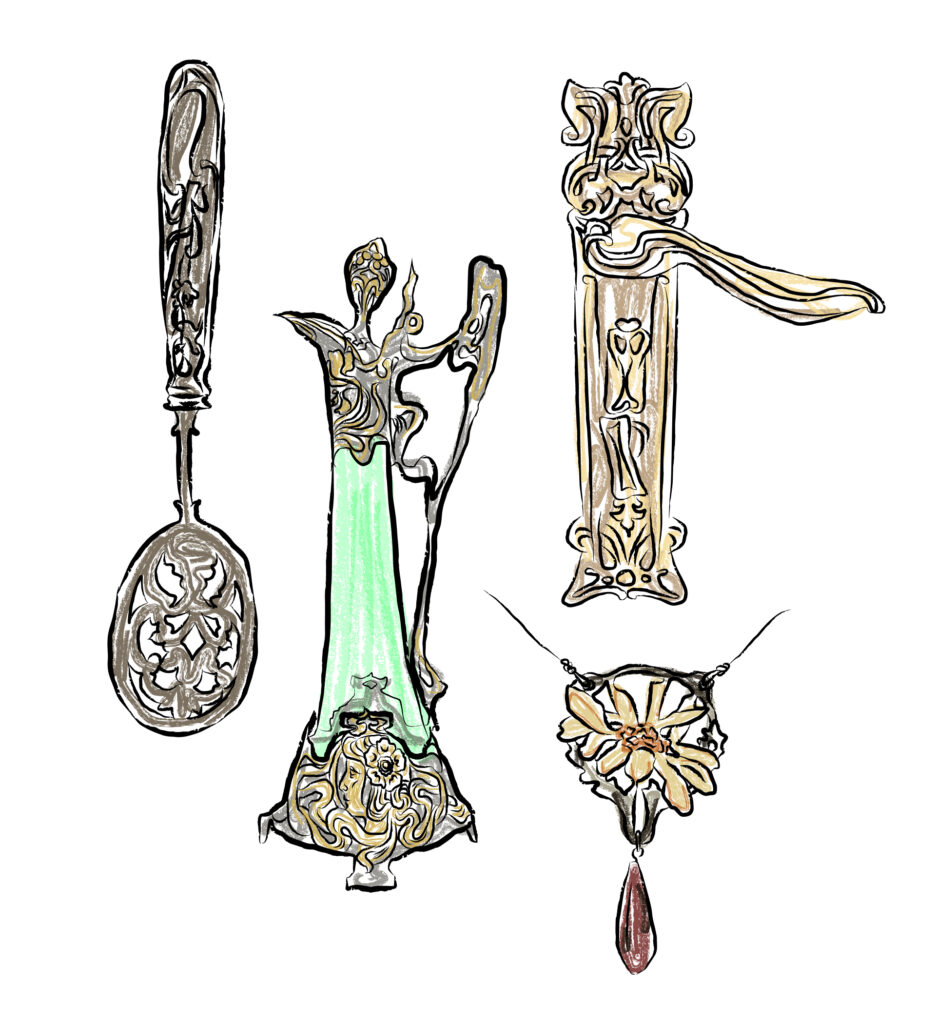
5 Design Elements You Can Borrow from Art Nouveau
Now that we have the theory covered, let’s get to the most interesting part. Given you’re still reading this article, I assume you’re somewhat intrigued by Art Nouveau. Hence, let me highlight its five common features you can easily integrate into your own designs.
Whiplash Lines
The name “whiplash” came from the flowing S-shape curves that adorn a stereotypical Art Nouveau piece. They snap like a whip in motion, which adds dynamic, vivid energy to the design. Such elements will serve as a guide to the viewer’s eye or enhance the organic whimsy flow of the otherwise static picture.

Nature Motifs
Art Nouveau artists were mainly inspired by the elements of nature. A leading motif of this style is, for sure, a weaving vine. The others include stylized flowers, leaves, insects, birds, and even peacock feathers. Needless to say, they’d emphasize the curves by simplifying the forms. So be sure to incorporate botanical elements in your work to give it some Art Nouveau flair.
Muted Colors
Scrolling through the examples of Art Nouveau artworks, you may notice their lack of flashiness. The style is highly characterized by muted, earthy tones. Such colors as dusty rose, sage green, ochre yellow, and soft lavender emit elegance and harmony. And to add some accent, the artists would adorn their works with a drip of gold.
Flowy Typography
Being a vital part of the style, Art Nouveau typography often feels handcrafted and personal. For it to catch the vibe, give your typeface some character and treat it more like a decorative element. Though be cautious not to overdo the whimsy part, and keep it readable. Some elegant curves and a serif or script font shall do.

Ornamental Frames
One of the most recognizable Art Nouveau details in artworks is a decorative frame. It gives more creative freedom to integrate naturalistic elements and also adds the vibe of an illustration. Frames overall are a great way to organize information and keep the design looking holistic. However, you don’t have to go for a whole frame – small ornamental corners are just as good.
Final Words
Now, when AI-generated content is everywhere and originality feels threatened, Art Nouveau has something important to teach us: rebellion works. Those artists faced a similar crisis over a century ago. However, they didn’t fight progress by stopping it – they took action and redirected it. Art Nouveau followers proved that even in an age of mass production, there’s always room for the vivid, the handcrafted, and the personal.
Despite its whimsy and elegance, Art Nouveau was never about pretty pictures. It was about refusing to let the world become gray and mechanical. And honestly? That’s a rebellion worth joining.

 TEAM SOLUTIONS
TEAM SOLUTIONS WORKFLOW SOLUTIONS
WORKFLOW SOLUTIONS



 REVIEW TOOL
REVIEW TOOL PROJECT MANAGEMENT
PROJECT MANAGEMENT TOOLS & INTEGRATIONS
TOOLS & INTEGRATIONS
 CLIENT INTERVIEWS
CLIENT INTERVIEWS








